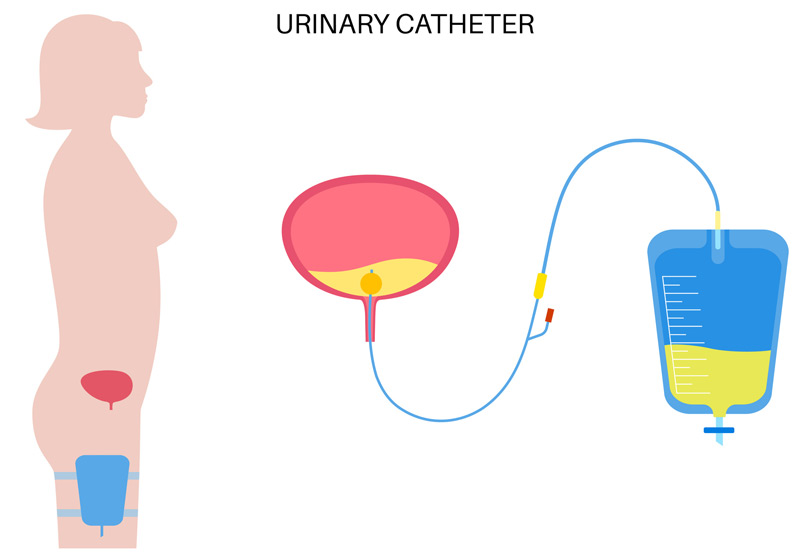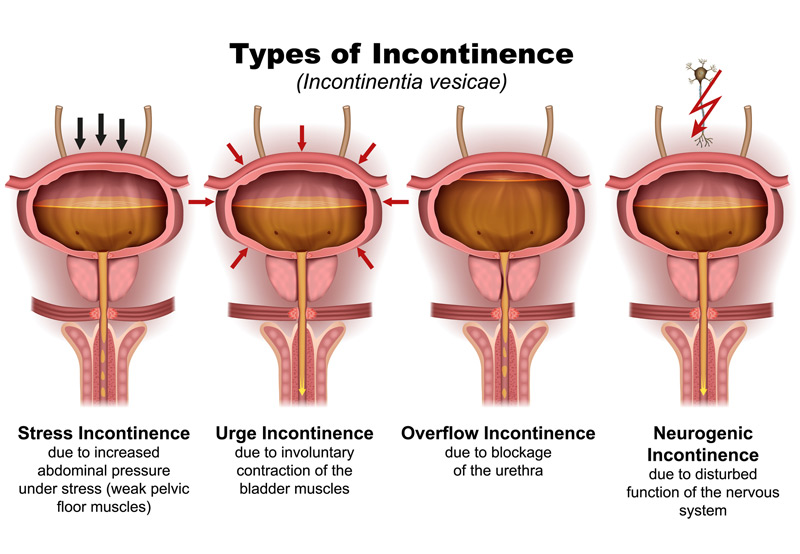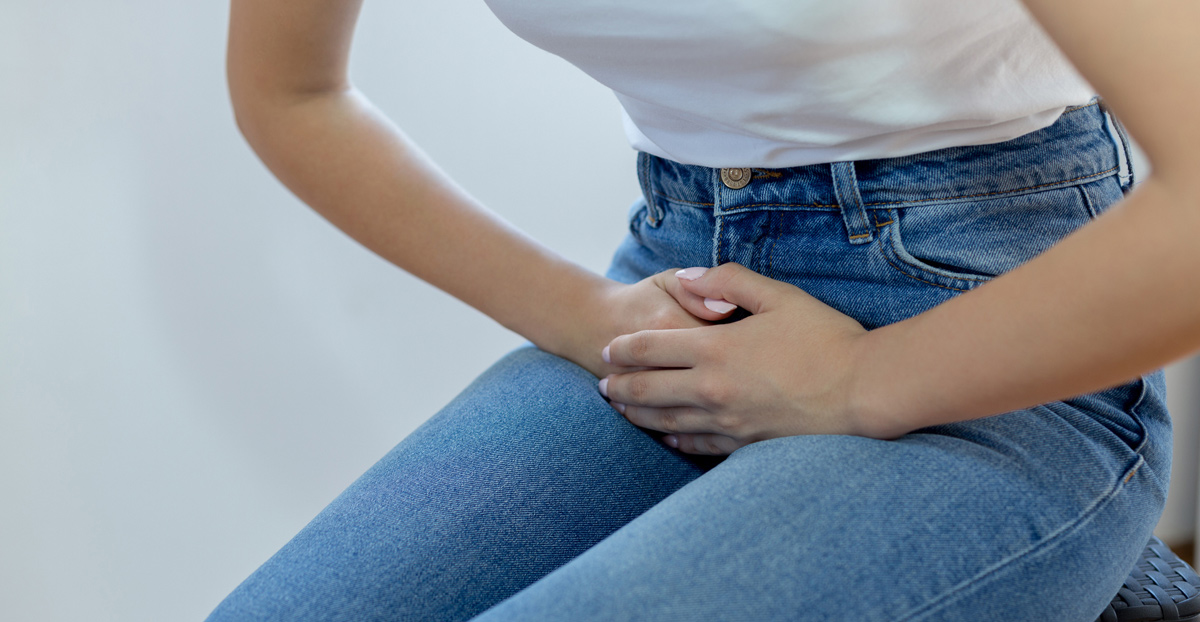

Urinary incontinence is uncontrollable leakage of urine. About 33 million of Americans have overactive bladder and experience symptoms of urgency and frequency of urination, with or without urge incontinence.
Types of Urinary Incontinence
The four types of urinary incontinence are stress urinary incontinence (SUI), overactive bladder (OAB), mixed incontinence, and overflow incontinence.
Stress Urinary Incontinence: In SUI, the pelvic muscles are weak or stretched and allow urine to escape. Individuals experience symptoms when physical activities like walking, exercising, bending, lifting, sneezing, or coughing. Doing Kegel exercises to strengthen the pelvic floor, making lifestyle changes, using vaginal and urethral devices, and even surgery can help manage SUI.
Overactive Bladder: More than 30% of men and 40% of women have OAB. Individuals with the condition have malfunctioning nerve signals that tell the brain to empty the bladder even when it isn’t full. Or, the bladder muscles may be too active and contract before the bladder has been filled, causing an urge to urinate. Symptoms of OAB include: sudden urge to urinate, inability to control the urge to urinate, and a need to urinate many times during the day and night. OAB is common in men with prostate problems and post-menopausal women. Poor diet can also increase the risk of developing OAB. To improve symptoms of OAB, patients may need to make lifestyle changes, take medication to relax the bladder muscle, or undergo surgery.
Mixed Incontinence: Individuals with mixed incontinence have both stress urinary incontinence and overactive bladder. Stress urinary incontinence refers to leakage caused by certain activities.
Overflow Incontinence: In overflow incontinence:
- The body makes more urine than the bladder can hold
- The bladder is full and cannot empty, leading to leakage
- A blockage is preventing the flow of urine
- The bladder muscle is unable to contract
- The individual can only urinate a small amount
- Constant dripping, or dribbling
Overflow incontinence is more common in men with prostate problems or who have undergone prostate surgery.

Managing Urinary Incontinence
Various devices and products can be used to collect and hold urine. Indwelling catheters, external collecting systems, urine drainage bags, catheters for intermittent catheterization (IC), absorbent products, and toilet substitutes can help individuals manage symptoms of urinary incontinence.
Indwelling Catheters: A catheter is a flexible tube that remains in the bladder day and night to help drain urine into a bag outside the body. The Foley catheter is placed in the urethra and has a balloon that holds the tube in the bladder. The suprapubic catheter is placed above the pubic bone through a surgical cut made in the abdomen. This type of catheter is safer because there is less risk of bacteria growth (since it is located away from the vagina and rectum).
External Collecting Systems: For women, an external collection device funnels urine from a pouch through a tube. The collective device is attached to the outside of the labia.
Urine Drainage Bags: Internal and external collective devices are connected to drainage bags that collect urine flowing from the bladder. Overnight bags can hold 1,500 to 2,000 milliliters, while smaller leg bags hold between 500 and 800 milliliters of urine.
